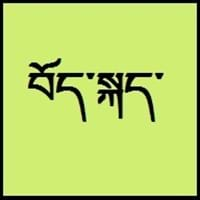Countries
African Union, Democratic Republic of the Congo, East African Community, Kenya
China, Nepal
National Language
Burundi, Kenya, Madagascar, Malawi, Mozambique, South Sudan, Tanzania
Nepal, Tibet
Second Language
Not spoken in any of the countries
Not spoken in any of the countries
Speaking Continents
Africa
Asia
Minority Language
Not spoken in any of the countries
China, India, Nepal
Regulated By
Chama cha Kiswahili cha Taifa (Kenya)
Committee for the Standardisation of the Tibetan Language
Interesting Facts
- Swahili language has borrowed many words from Arabic language.
- The oldest written scripts in swahili language were found in 18th century.
- Tibetan dialects vary alot, so it's difficult for tibetans to understand each other if they are not from same area.
- Tibetan is tonal with six tones in all: short low, long low, high falling, low falling, short high, long high.
Similar To
Burundi, Rwanda, Malawi Languages
Not Available
Derived From
Arabic Language
Not Available
Alphabets in
Swahili-Alphabets.jpg#200
Tibetan-Alphabets.jpg#200
Scripts
Latin
Tibetan alphabet, Tibetan Braille
Writing Direction
Not Available
Left-To-Right, Horizontal
Hello
Habari
བཀྲ་ཤིས་བདེ་ལེགས། (tashi delek)
Thank You
Asante
ཐུགས་རྗེ་ཆེ་། (tujay-chay)
How Are You?
Habari gani?
ཁྱེད་རང་སྐུ་གཇུགས་བདེ་པོ་ཡིན་པས།
(kayrang kusu debo yimbay?)
Good Night
Usiku mwema
གཟིམ་ལཇག་གནང་དགོས་། (sim-jah nahng-go)
Good Evening
Habari za jioni
དགོང་དྲོ་བདེ་ལེགས།
Good Afternoon
nzuri Alasiri
ཉིན་གུང་བདེ་ལེགས།
Good Morning
Habari za asubuhi
སྔ་དྲོ་བདེ་ལེགས། (nga-to delek)
Please
tafadhali
thu-je zig / ku-chee.
Sorry
pole
ཀོང་དགས་། (gawn-da)
Bye
bye
ག་ལེར་ཕེབས་། (kha-leh phe)
I Love You
nakupenda
ང་ཁྱེད་རང་ལ་དགའ་པོ་ཡོད་ (nga kayrâng-la gawpo yö)
Excuse Me
Samahani
དགོངས་དག བཟོད་དུ་གསོལ། ཐུགས་རྗེ་གཟིགས།
Dialect 1
Kiunguja
Central Tibetan
Where They Speak
Zanzibar island
China, India, Nepal
How Many People Speak
Not Available
Dialect 2
Kimrima
Khams Tibetan
Where They Speak
Dar es Salaam
Bhutan, China
How Many People Speak
Not Available
Dialect 3
Kimgao
Amdo Tibetan
Where They Speak
Kilwa
China
How Many People Speak
Not Available
Speaking Population
Not Available
Not Available
Native Name
Not Available
བོད་སྐད་ (pö-gay)
Alternative Names
Kisuaheli, Kiswahili
Bhotia, Dbus, Dbusgtsang, Phoke, Tibetan, U, Wei, Weizang, Zang
French Name
swahili
tibétain
German Name
Swahili
Tibetisch
Pronunciation
Not Available
Not Available
Ethnicity
Swahili people or Waswahili
tibetan people
Origin
6th century
c. 650
Language Family
Niger-Congo Family
Sino-Tibetan Family
Subgroup
Benue-Congo
Tibeto-Burman
Branch
Bantu
Not Available
Early Forms
No early forms
Old Tibetan, Classical Tibetan
Standard Forms
Swahili
Standard Tibetan
Signed Forms
Not Available
Tibetan Sign Language
Scope
Individual, Macrolanguage
Not Available
ISO 639 6
Not Available
Not Available
Glottocode
swah1254
tibe1272
Linguasphere
99-AUS-m
No data Available
Language Type
Living
Not Available
Language Linguistic Typology
Not Available
Not Available
Language Morphological Typology
Not Available
Not Available
Swahili and Tibetan Greetings
People around the world use different languages to interact with each other. Even if we cannot communicate fluently in any language, it will always be beneficial to know about some of the common greetings or phrases from that language. This is where Swahili and Tibetan greetings helps you to understand basic phrases in Swahili and Tibetan language. Swahili word for "Hello" is Habari or Tibetan word for "Thank You" is ཐུགས་རྗེ་ཆེ་། (tujay-chay). Find more of such common Swahili Greetings and Tibetan Greetings. These greetings will help you to be more confident when conversing with natives that speak these languages.
Swahili vs Tibetan Difficulty
The Swahili vs Tibetan difficulty level basically depends on the number of Swahili Alphabets and Tibetan Alphabets. Also the number of vowels and consonants in the language plays an important role in deciding the difficulty level of that language. The important points to be considered when we compare Swahili and Tibetan are the origin, speaking countries, language family, different greetings, speaking population of these languages. Want to know in Swahili and Tibetan, which language is harder to learn? Time required to learn Swahili is 36 weeks while to learn Tibetan time required is 24 weeks.





